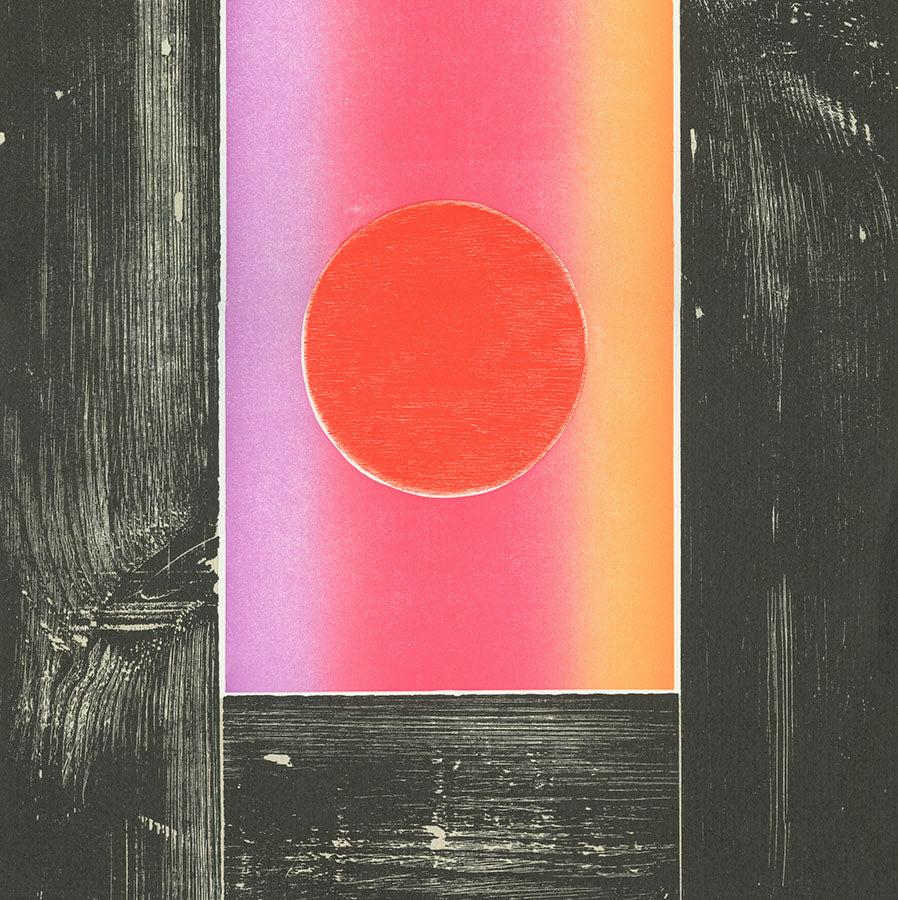 Sold
Sold
Sun Rising or Veiled Sun
ROTHENSTEIN, Michael
Color linoleum and woodcut on wove paper.One of 8 print from a series titled Sun and Moons.From the only, small edition of proofs only. All works ...
View full detailsBritish artist William Michael Rothenstein (1908-1993), chose to go by the name of Michael Rothenstein for an obvious reason: he was the youngest son of the famous portrait painter Sir William Rothenstein. Despite being trained by his father, and then formally at the Chelsea Polytechnic and the Central School of Arts and Craft, he can be said to be a late bloomer. Painting in a Neo-Romantic style in the 1930s and also topographically circa 1940, he increasingly turned his attention to printmaking in the forties and beyond. Under the influence of a community of artists who, like him, settled in Great Bardfield (Essex), painters such as John Aldridge and Edward Bowden, Rothenstein’s esthetic increasingly veered toward simplified lines. By the middle of the 1950s he mostly worked as a printmaker, creating experimental linocuts and woodcuts, which broke with tradition. His compositions at times became nearly completely abstract, or they were forms simplified to the point of being symbols of their subjects. He is known to have spent time working at Atelier 17 alongside Stanley William Hayter in Paris. There is no doubt that some of Rothenstein’s technical inventiveness was aroused in this exciting environment. As one of the main organizers of the Great Bardfield Artists shows, which were hugely popular in the 1950s, his acclaim grew. He taught at a number of art schools, authored well-received books and was recognized by his peers by becoming a Royal Academician in 1984.
 Sold
Sold
Color linoleum and woodcut on wove paper.One of 8 print from a series titled Sun and Moons.From the only, small edition of proofs only. All works ...
View full detailsPlease sign up for our newsletter
Email: info@armstrongfineart.com
Phone: 773-887-6776
1200 West 35th Street, #186
Chicago, IL 60609
Copyright © 2026 Armstrong Fine Art.
Development by Alo Agency. Powered by Shopify
